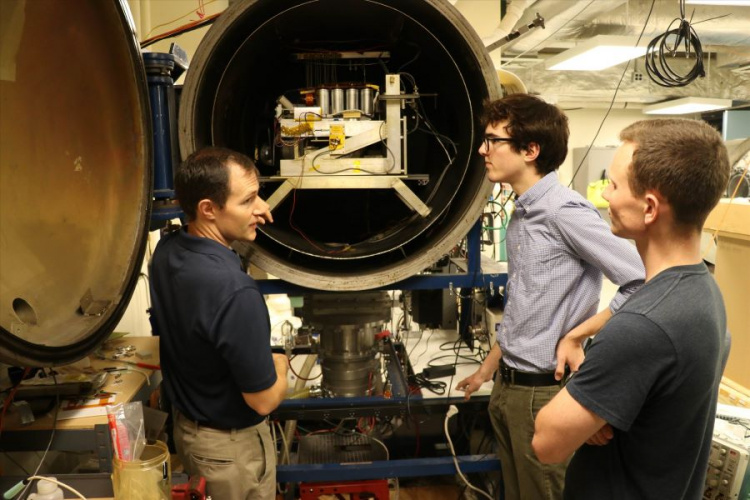
The fuel is based on two widely available salts and has previously been proven to function as a combustion propellant. In the latest work, published in the Journal of Propulsion and Power, the U of I team demonstrated that the salt mix could also work with electrospray thrusters, where tiny droplets of the liquid propellant are expelled using electrostatic acceleration, creating small amounts of thrust. The NASA-supported research has implications for satellite technology in particular where in-orbit ion propulsion is already commonplace.
Flying “ionic wind” propeller allows rotor to act as engine
LightSail 2 orbiting Earth with solar propulsion
“We need a propellant that will work in both modes,” said Joshua Rovey, associate professor in the Department of Aerospace Engineering at the University of Illinois at Urbana-Champaign.
“So, we created a propellant that is a mixture of two commercially available salts -hydroxylammonium nitrate and emim ethylsulphate. We have published other research papers showing that salt propellants work in the high-acceleration combustion mode. Now we know that this unique combination of salts will also work in the electric fuel-efficient mode.”
Electrospray or colloid propulsion involves minute quantities of a liquid fed into narrow capillaries. A strong electric field is applied at the tip of the capillaries, drawing droplets of the propellant out as a fine spray or aerosol. As well as demonstrating that the salt-based fuel could be sprayed in this way, the Illinois team also wanted to determine what chemical mix was ejected by the plume, as the two salts had not previously been mixed before in this way.
“We saw some of the hydroxylammonium nitrate salt bonding with the emim ethyl sulphate salt,” said Rovey. “The two are mixed together inside the propellant and are constantly bonding with each other and then detaching.
“There’s a chaotic nature to the system and it was unclear how those interactions within the liquid itself would propagate and show up in the spray. There are no chemical reactions happening. It’s just that we start with A and B separately and when they come out in the spray, A and B are bonded together.”




Glasgow trial explores AR cues for autonomous road safety
They've ploughed into a few vulnerable road users in the past. Making that less likely will make it spectacularly easy to stop the traffic for...